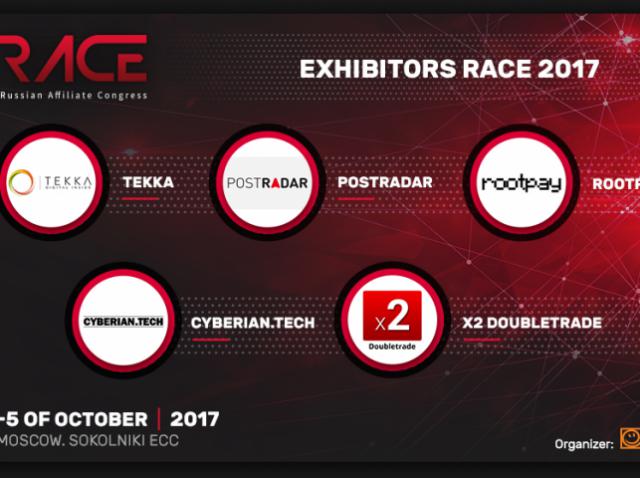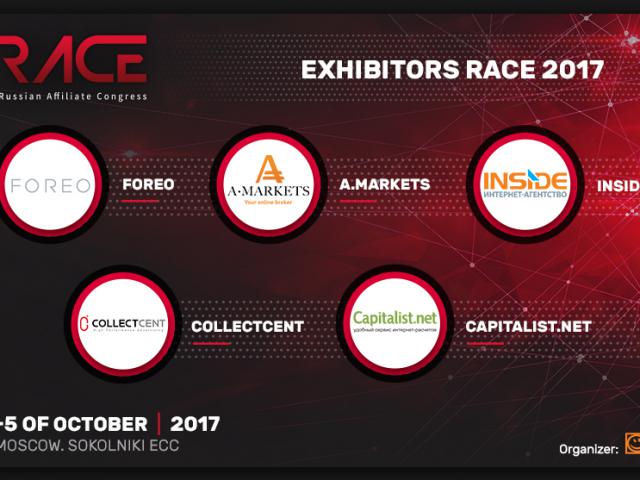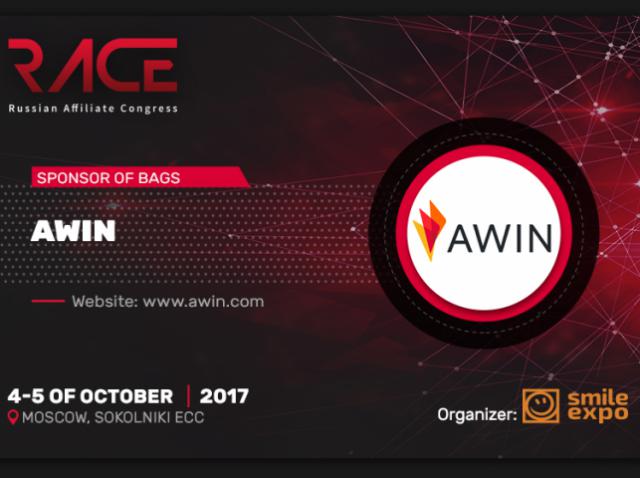Reasons for inefficient multilanding: examples of key mistakes
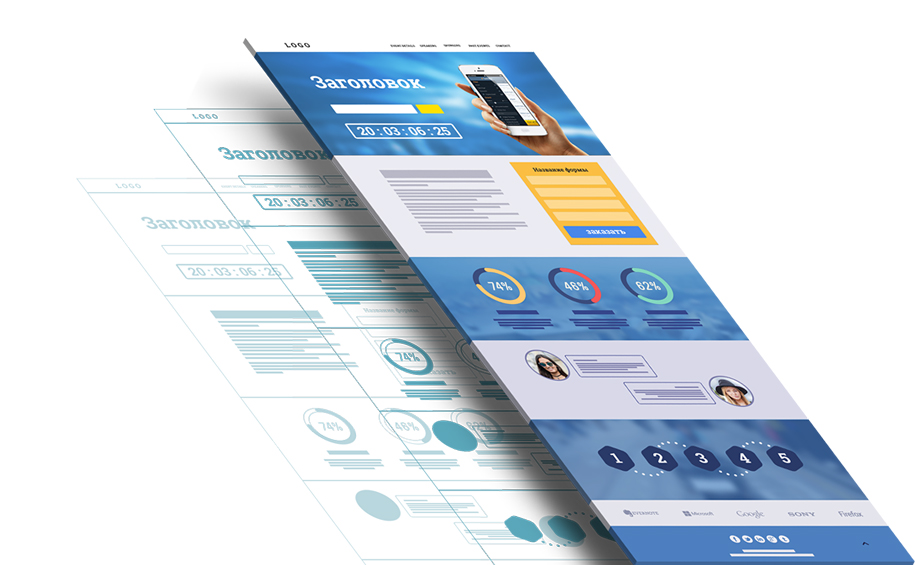
Multilanding with adaptive content has banged around in a recent year. The main fact is that it does not always efficient. To find out the reason, specialists have analyzed 342 projects and determined four key mistakes.
1. The same request and headline
Contextual advertising experts usually say that the standard mechanics of Yandex.Direct will be able to increase the relevancy of ad texts and users’ requests. As the result, Yagla allows to stress the name and specify the substitution. This substitution fully corresponds to the search request.
However, one should not give other substitution for each request, because the goal is to realize the image of you target audience. It will allow to create unique offers for customers.
The system looks as follows:
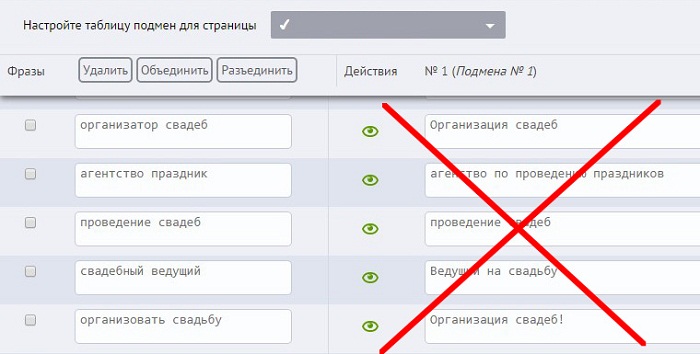
The wedding agency was recommended to put in the following corrections:
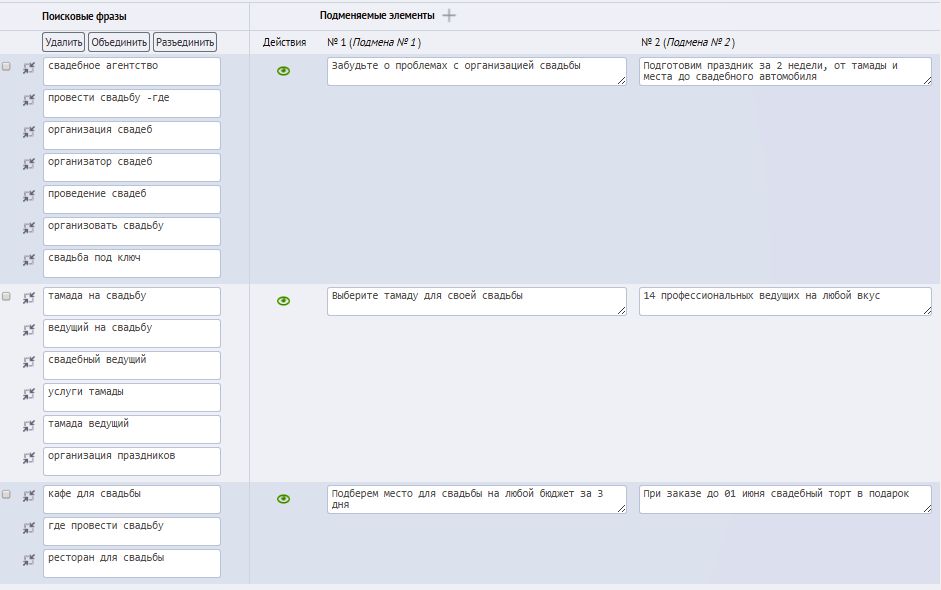
2. Absence of targets and A/B tests
Marketing specialists fail to create a successful offer on the first try. It is proved by the analysis of customer campaigns’ statistics, showing that the adjustment of efficient substitutions have brought results for only 50% of users. If this is accompanied with the first mistake, it will lead to the epic failure.
It is quite important to follow the correct order:
- to determine substituted elements;
- to define the target;
- to make a hypersegmentation of the target audience;
- to create dynamic content for various offers;
- to launch traffic;
- to monitor statistics.
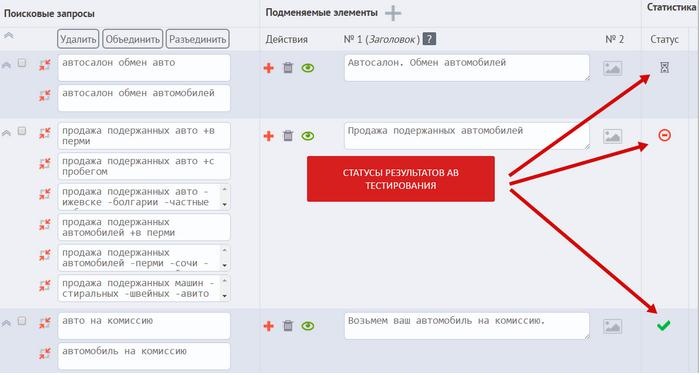
Note:
- red circle: a substitution works worse than an initial option;
- green check sign: conversion growth;
- sand clock: insufficient amount of traffic.
3. Non-adapted pages
The mistake is caused by the choice of substituted elements. For instance, marketing experts want to adapt the page for a new product or to add a new range of goods. They replace elements on the first screen without changing other blocks visible for customers when scrolling the page.
Adding new products, one should make sure that their names, captions and images are correct.
4. Stressing minor details
Users can choose the CTA button or image on the fifth screen and wait for the quick growth of applications but it is absent. Why does it happen?
There is a five-second rule when customers make a decision whether to left the page or to stay. If the offer is inefficient, users won’t come to the fifth screen. To avoid such a situation, one should change elements influencing conversion. A headline is the most significant one.
Example: a food delivery company replaces the ‘Order a call’ button for ‘Call me back’ and add the text: ‘When ordering from 500 rubles, the delivery is free’. It increased conversion by 2.2%.
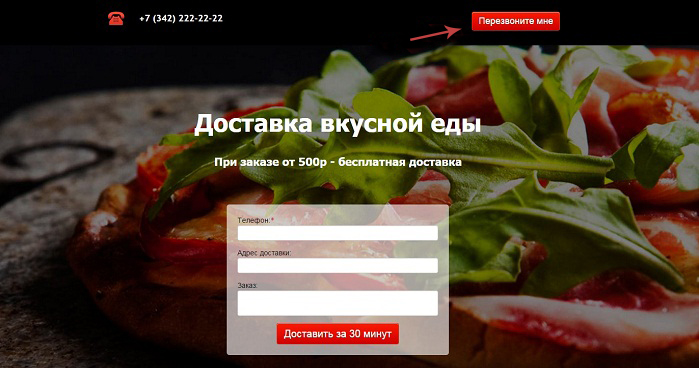
After the recommendation to change the offer and readjust the headline according to requests, the conversion rate increased by 237%.
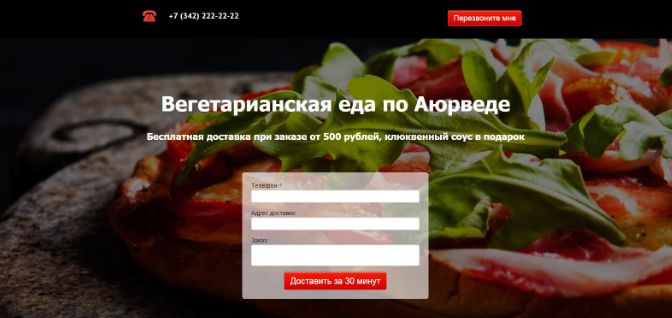
Source: yagla.ru
You can learn more at RACE 2017!


